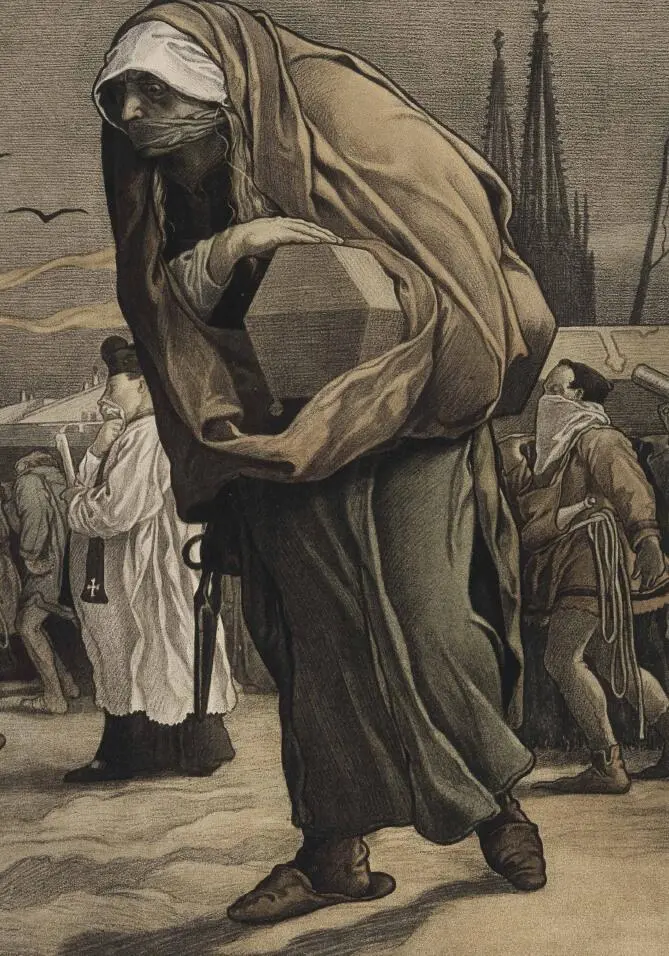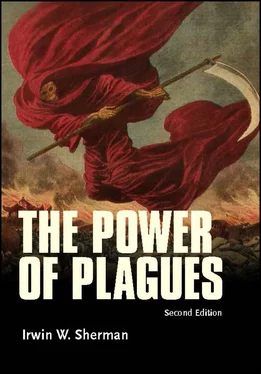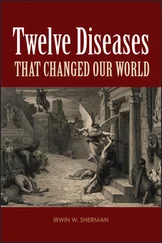
Figure 3.4St. Sebastian in a painting by Andrea Mategna (1490) in Ca d’ Oro, Venice , Courtesy of Wikiart.org
Over the next 3 centuries Rome slowly collapsed under pressure from the Germanic tribes (Goths and Vandals) as well as recurrent outbreaks of mysterious plagues such as that of Antonine, Cyprian, and others. Gradually, the Four Horsemen of the Apocolypse—Famine, Disease, War, and Death—led to a disintegration of the Roman Empire. And when the Germanic peoples moved into Italy and Gaul, crossed the Pyrenees into Spain, and even reached North Africa, they too became subject to this plague; by 480 the Vandals themselves were so sickly that they were unable to resist invasion by the Moors.
The historian Procopius of Caesarea wrote in The Persian Wars that “it embraced the entire world and blighted the lives of all men.” He described the symptoms of the disease: great swellings, or buboes, appeared in the groin and armpit as the lymph nodes enlarged; there was delirium and frantic restlessness; and some became comatose. There was general hysteria and panic. If the buboes were lanced, there was the possibility of survival, but most died in 5 days. It raged in the city of Constantinople (present-day Istanbul), the capital of the Roman Empire in the East, for months, and so numerous were the corpses that they were cast into hollow towers of some incomplete fortifications.” Procopius’ eyewitness account claimed that 300,000 died, but this is probably an exaggeration. There is, however, no question that all of Europe suffered from this plague, and 5 years later it had reached Ireland, and by that time it had killed close to a million people.
This disease arrived in A.D. 541 and raged intermittently in Europe, North Africa, and the Middle East until 757. Called the plague of Justinian, it was probably bubonic plague that came to the Mediterranean from an original focus in northeast India or via central Africa. From Lower Egypt the disease reached the harbor town of Pelusium in 540, from where it spread to Alexandria and then by ship to Constantinople, the capital of Justinian’s empire. It is speculated that Justinian’s General Belisarius was unable to accomplish the goal of Justinian, that is, the reestablishment of the Roman Empire in all its glory, because of the outbreak of plague.
The plague-induced losses in the population reduced the taxes and services available to the government. Lacking in manpower and money, Justinian was unable to send aid to his beleaguered troops. The survivors of the plague were damaged both physically and mentally and had diminished self-confidence. As disasters continued to befall the empire, the Roman and Persian forces were unable to offer more than token resistance to the Moslem armies that swarmed out of Arabia in 634.
Bubonic plague recurred every 3 or 4 years for decades, and its effects lasted well into the 7th century. It is estimated that by the year 600 the plague of Justinian—the first pandemic of bubonic plague—had reduced the population by 100 million people, almost 50% of the population of Western Europe. McNeill has observed that the plague of Justinian resulted in “the perceptible shift away from the Mediterranean as the preeminent center of European civilization and the increase in the importance of more northerly lands.” The Justinian plague and the subsequent outbreaks of plague over 2 more centuries marked the end of the classical world—the Greek and Roman civilizations—and ushered in the so-called Dark Ages. Plague so diminished trade in the Mediterranean that it left most countries with only a bartering economy, cities withered, feudalism grew, religion became more fatalistic, and Europe turned inward upon itself.
4
An Ancient Plague, the Black Death

Figure 4.1 The Plague by Felix Jenewein (1900) shows a mother carrying a coffin with her child (Courtesy Wellcome Library, London, CC-BY 4.0)
During the last 2,500 years, three great plague pandemics have resulted in social and economic upheavals unmatched by armed conflicts or any other infectious disease. In Constantinople, the capital of the Roman Empire in the East, it was the first plague pandemic (A.D. 542-543) that surely contributed to Justinian’s failure to restore imperial unity. In the year 1346 the second pandemic began, and by the time it disappeared in 1353, the population of Europe and the Middle East had been reduced from 100 million to 80 million people ( Fig. 4.1). This devastating pandemic, known as the Black Death, the Great Dying, or the Great Pestilence, put an end to the rise in the human population that had begun in 5000 B.C., and it took more than 150 years for the population to return to its former size. Some believe this catastrophic crash in population to be Malthus’s prophecy come true, while others, such as the historian David Herlihy, consider the Black Death to be not a catastrophe promoted by “positive checks” (i.e., disease, war, and famine) but an exogenous factor that served to break a Malthusian stalemate. That is, despite fluctuations in population size, relatively stable population levels were maintained over prolonged periods of time due to “preventive checks” (i.e., changes in inheritance practices, delay in the age of marriage, and birth controls). The Black Death did more than break the Malthusian stalemate; it allowed Europeans to restructure their society along very different paths.
Although those living in the medieval period recognized that plague was a contagious disease spread from person to person, its cause was not identified. Indeed, most believed it to be “a vicious property of the air” itself. The Black Death is most associated with Florence, one of the great cities of Europe at the time, and because it felt the full impact of the epidemic, it is sometimes called the Plague of Florence. Giovanni Boccaccio (1313-1375), who lived in Florence during the plague, described what he witnessed:
towards the beginning of spring … the doleful effects of the pestilence began to be horribly apparent by symptoms … an issue of blood from the nose was a manifest sign of inevitable death; but in men and women alike it first betrayed itself by the emergence of certain tumors in the groin or armpits, some of which grew as large as a common apple, others as an egg … from the two said parts of the body it soon began to propagate and spread itself in all directions; after which the form changed, black spots … making their appearance in many cases on the arm or thigh or elsewhere, now few and large, then minute and numerous … almost all within three days from the appearance of said symptoms, sooner or later, died … such as were left alive inclining almost all of them to shun and abhor all contact with the sick and all that belonged to them, thinking thereby to make their own health secure … they banded together and formed communities in houses where there were no sick, and lived a separate and secluded life, which they regulated with the utmost care … eating and drinking moderately of the finest wines, holding converse with none but one another … diverting their minds with music and, other delights as they could devise.
The contagious nature of plague led to the belief that the only way security could be achieved was in total isolation of the sick. But despite its being clearly recognized that the enemy was the sick, it was the lack of appreciation that microbes were the cause of infectious diseases that led to the institution of crude and generally ineffectual public health measures. In 1374 the Venetian Republic required that all ships and their crew, passengers, and cargo had to remain on board for 40 days while tied up at the dock; this gave rise to the term “quarantine” (from the Italian word quaranta , meaning “forty”). Soon all European ports restricted entry by quarantine, but the disease continued unabated. “Cordons sanitaires” (literally rings of armed soldiers ordered to guard against the fugitives of disease) restricted the movement of people and may have reduced the spread of plague, but oftentimes the infected individuals were shut up in their homes with the uninfected members of the family, leading to higher mortality. More-effective measures included the burning of clothing and bedding and the burying of the dead in shallow unmarked graves sprinkled with lye. The public, unable to identify the real source of the plague, used “outsiders” as scapegoats. The Black Death also led to societal and religious changes: feudal structure began to break down, the laboring class became more mobile, merchants and craftsmen became more powerful, and guild structures were strengthened. There was also a decline in papal authority, and people lost faith in a Christian church that was powerless to stem the tide of death. The horrors of the plague during this time are depicted in the 1562 painting Triumph of Death ( Fig. 4.2). by Pieter Bruegel (1525-1569) and are graphically described in the introduction to Boccaccio’s classic collection of short stories The Decameron and in Albert Camus’ book La Peste (The Plague) . It is even depicted in popular movies such as The Seventh Seal by Ingmar Bergman, Monty Python and the Holy Grail , and the movie based on the book Arrowsmith by Sinclair Lewis.
Читать дальше














